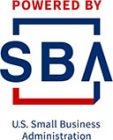Your business is launched, your product is ready! Don’t let lack of preparation stop you from getting it on the shelf. Here are a few steps to make sure you’re ready to sell your wholesale product when you walk in the door to meet with a retail buyer.
1. Be fluent in your product
This is where all the time and energy you put into designing a product and bringing it to market comes in. Be ready to talk about who the target audience is, how it works, special features, how it will bring value to customers’ lives, and what sets it apart from similar items.
2. Anticipate questions
If possible, ask colleagues or networking partners to grill you about your product and sales so that you’re ready to answer any question that comes your way. Some questions that may come up include:
- Who is your competition? Are you priced competitively?
- What are the minimum order requirements?
- What is the timeline for order fulfillment?
- How will you handle a problem with the order or a defect in a product? What is your warranty policy?
3. Prepare your sales pitch
Outline a brief sales pitch. Give a brief background of who you are, what you are selling, why people will want to buy your product, and what distinguishes it from its competition. Practice your sales pitch so that you can deliver it with enthusiasm and excitement to convince the retail buyer that their customers will be excited to purchase it from their store.
4. Research your buyer
It is important to know about the store, their target market and customers, and other product lines they sell to make sure the store is a good fit for your product.
5. Bring samples
If available, bring as many samples of your highest quality products as you can, so the buyer can see it, feel it, try it out, and picture how it will fit in their store. If no samples are available, bring brochures with comprehensive information and high quality photos.
6. Make ordering easy
Once you’ve sold a buyer on your product, make it really easy for them to order (and reorder!) a supply for their store. This includes making sure they have accurate information about how to reach you to place an order (phone, email, online ordering form), as well as a comprehensive order form and line sheet.
A good order form should be well-organized, and provide easy ways to account for products, sizes, styles, colors, quantity, and payment options.
A comprehensive line sheet makes the process of buying products simple and straightforward. Think of it as a summary, or cheat sheet, of all the information you’ll be relaying in your meeting, so that a buyer has the information at a glance after you’ve gone.
Key elements of a line sheet include:
- General business information: Business name and logo, your name and title, contact information, website, and possibly a 1-2 sentence summary about your business/brand.
- Product images and brief description: Straightforward, representative photos of your products, paired with a succinct, accurate description detailing function and key features, so that buyers are clear exactly what is being presented in the image.
- Purchasing options: Provide complete information about what sizes, colors, and other options are available with each product. Mark any items that are One Size Fits All as such, and display a photo or sample color swatch of any additional colors.
- Prices: Clearly state the price of each product, including any volume discounts. Include shipping estimates, and taxes where applicable.
Congratulations on taking this next step to get your product to market!




